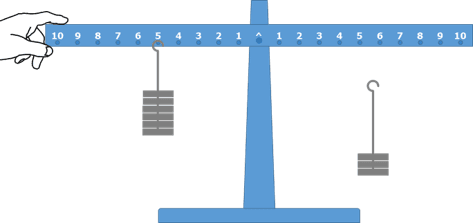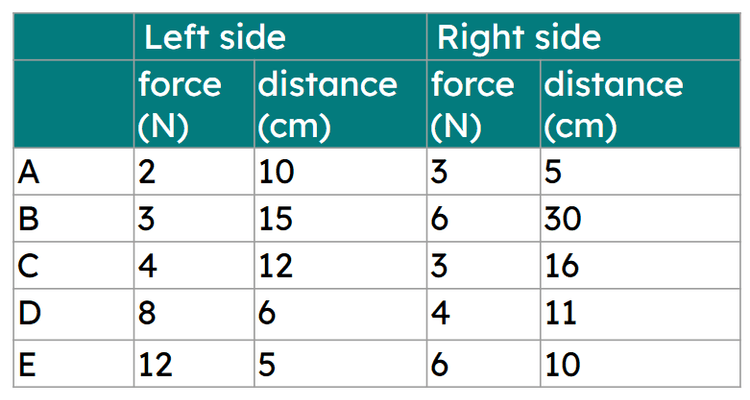Myths about teaching can hold you back
- Year 9
- Year 9
Turning forces
I can investigate and calculate the size of turning forces.
These resources will be removed by end of Summer Term 2025.
Switch to our new teaching resources now - designed by teachers and leading subject experts, and tested in classrooms.
These resources were created for remote use during the pandemic and are not designed for classroom teaching.
Lesson details
Key learning points
- A moment causes turning.
- Moment = force × (perpendicular) distance from the pivot.
- Moments are measured in Newton-metres (Nm).
Keywords
Balanced - A beam is balanced if it is not starting to rotate about its pivot.
Newton-metre - One unit for the turning effect of a force is the newton-metre (N m).
Newton-centimetre - Another unit for the turning effect of a force is the newton-centimetre (N cm).
Moment - The turning effect of a force is called a moment.
Common misconception
The turning effect is a force (it is often wrongly called a turning force).
Correct any use of the erroneous term ‘turning force’ and use examples of the turning effect caused by force with a lever.
To help you plan your year 9 science lesson on: Turning forces, download all teaching resources for free and adapt to suit your pupils' needs...
To help you plan your year 9 science lesson on: Turning forces, download all teaching resources for free and adapt to suit your pupils' needs.
The starter quiz will activate and check your pupils' prior knowledge, with versions available both with and without answers in PDF format.
We use learning cycles to break down learning into key concepts or ideas linked to the learning outcome. Each learning cycle features explanations with checks for understanding and practice tasks with feedback. All of this is found in our slide decks, ready for you to download and edit. The practice tasks are also available as printable worksheets and some lessons have additional materials with extra material you might need for teaching the lesson.
The assessment exit quiz will test your pupils' understanding of the key learning points.
Our video is a tool for planning, showing how other teachers might teach the lesson, offering helpful tips, modelled explanations and inspiration for your own delivery in the classroom. Plus, you can set it as homework or revision for pupils and keep their learning on track by sharing an online pupil version of this lesson.
Explore more key stage 3 science lessons from the Hidden forces unit, dive into the full secondary science curriculum, or learn more about lesson planning.

Content guidance
- Risk assessment required - equipment
Supervision
Adult supervision required
Licence
Prior knowledge starter quiz
6 Questions
Q1.Which of these is not the result of there being a resultant force acting on an object?
Q2.Which of these objects do not make use of levers?
Q3.What name is given to the force that is applied to make a lever move?
Q4.What name is given to the force that is exerted by a lever?
Q5.Levers are often used as force __________ as they produce larger load forces than the effort force used to move them.
Q6.Which of these units can the size of the load force be measured in?
Assessment exit quiz
6 Questions
Q1.Match the keywords and phrases to the explanations.
a unit for the turning effect of a force for large distances
a unit for the turning effect of a force for small distances
the size of the turning effect of a force
Q2.Which of these describes the conditions needed for two people to balance on a seesaw?

Q3.Six masses are hung 5 cm from the left on this balance beam. Where on the right side should the three masses be hung to make the beam balance?

Q4.A 4 N weight is placed 0.5 m from a pivot on a balance beam. Where should an 8 N weight be placed to balance the beam?
Q5.Starting with the largest, put the following forces and distances from a pivot into order of decreasing size of the moment they will cause.
Q6.A pupil tests different combinations of force and distance on opposite sides of a balance beam. Which rows show combinations that will balance the beam?



